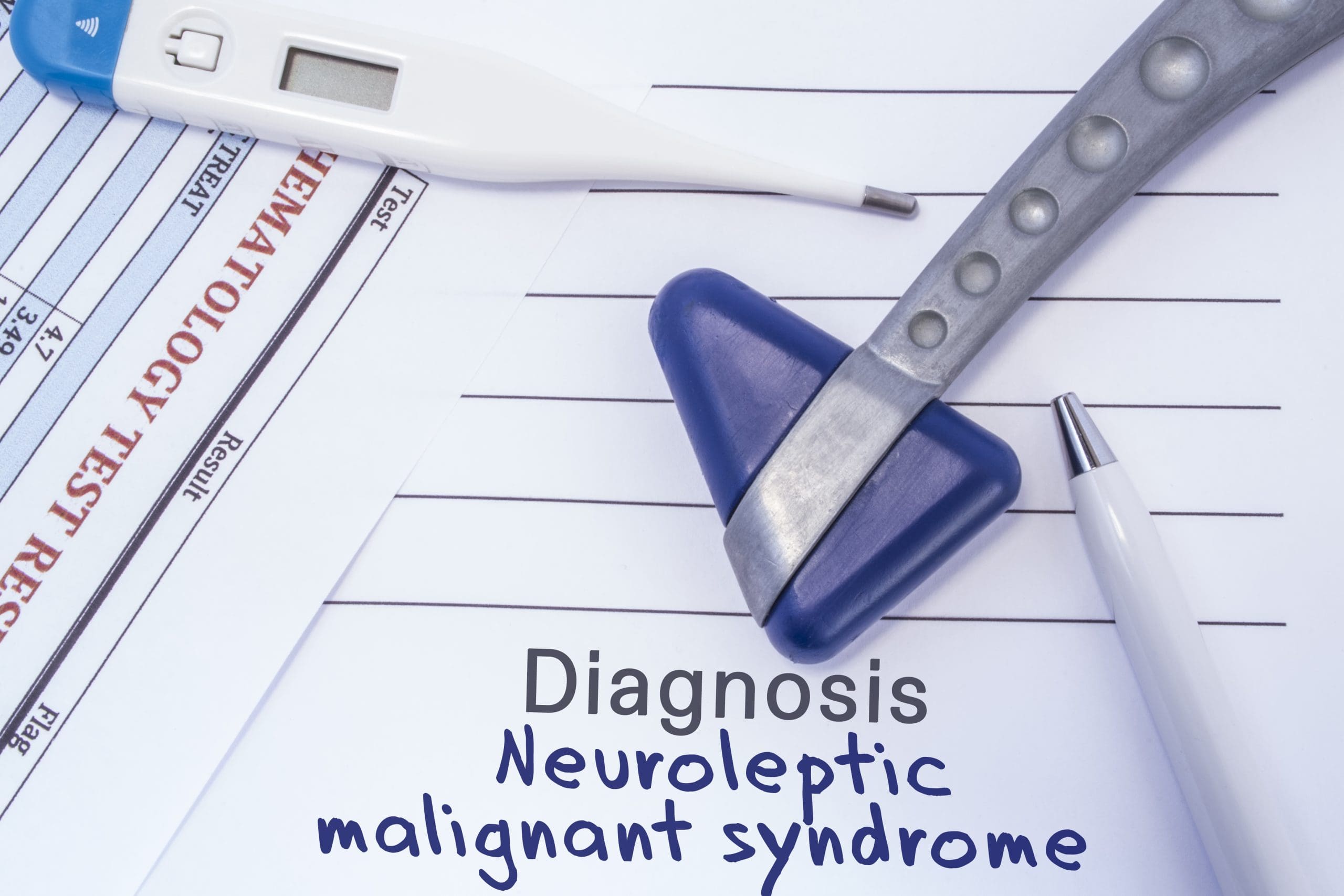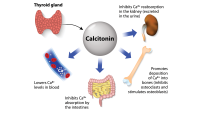- Neuroleptic malignant syndrome, a life-threatening neurologic emergency, frequently occurs with dopamine antagonists (antipsychotics and antiemetics).
- Signs and symptoms include altered mental status, rigid muscles, and creatine kinase elevation.
- Treatment begins with cessation of the causative agent, and also may include aggressive body temperature reduction techniques, benzodiazepine and dantrolene administration, and electroconvulsive therapy.
Brent Whitaker*, a 38-year-old man, arrives in your progressive care unit with dyspnea, altered mental status, and fever. The ED nurse drew blood for cultures, a complete blood count, and a comprehensive metabolic panel. She also collected urine and sputum cultures. The ECG shows sinus tachycardia and the chest x-ray is normal. In the ED, his O2 saturation was 88% on room air; on 2 liters per minute of O2, he’s at 93%. The provider also orders broad-spectrum antibiotics, acetaminophen, I.V. fluids, and a beta blocker.
Mr. Whitaker’s history includes smoking two packs of cigarettes per day and hypertension. Last month he received a diagnosis of bipolar 1 disorder. His medication list includes metoprolol, bupropion, and risperidone.
Anticholinergics: Adverse effects
Reversing neuroleptic malignant syndrome
On the scene
Mr. Whitaker appears diaphoretic and agitated. His muscles are stiff and rigid, and you note a slight tremor in his upper extremities. His vital signs include HR 112 bpm, RR 24 breaths per minute, temperature 102.9˚ F (39.4˚ C), and BP 184/96 mmHg. You call a rapid response.
Lab tests show leukocytosis, elevated creatine kinase (CK), hyperkalemia, hypocalcemia, hypomagnesemia, and mildly elevated alkaline phosphate, alanine transaminase, and aspartate aminotransferase. The hospitalist diagnoses Mr. Whitaker with neuroleptic malignant syndrome (NMS).
The hospitalist notes that risperidone most likely contributed to NMS. Per orders, you increase the rate of I.V. fluids and place ice packs in Mr. Whitaker’ axillae. You administer clonidine to lower his BP, lorazepam to control agitation, and enoxaparin to prevent blood clots.
Outcome
After transfer to the ICU, Mr. Whitaker receives a cooling blanket to reduce his body temperature, and he’s placed on a cardiac monitor. The ICU provider orders bromocriptine and dantrolene to reduce muscle rigidity. Dantrolene also reduces his body temperature and CK levels. The ICU nurse carefully monitors the patient’s BP, BUN, and CK levels. After 8 days in the ICU, he’s transferred to the medical-surgical unit and then discharged 3 days later.
Education
NMS, a life-threatening neurologic emergency, frequently occurs with dopamine antagonists. Common potentially fatal complications include electrolyte imbalances, dehydration, acute renal failure with rhabdomyolysis, dysrhythmias, blood clots, liver failure, and seizures.
NMS usually begins with altered mental status, rigid muscles, CK increases, and hyperthermia. Dysautonomia presents as tachycardia, hypertension or hypotension, tachypnea, dyspnea, and dysrhythmias.
The most important treatment is to discontinue the causative agent and anticholinergics. Temperature reduction may require aggressive techniques. The effectiveness of treating symptoms with benzodiazepine and dantrolene is anecdotal. Electroconvulsive therapy may help patients who don’t respond to medications within the first week of treatment.
NMS usually resolves within 2 weeks. Patients who experience renal failure as a result of NMS or who already have drug or alcohol use disorder have an elevated risk of death. Previously prescribed antipsychotics can be restarted (at a low dose and then titrated up) 2 weeks after symptoms resolve. Lithium should not be prescribed with another antipsychotic agent. The patient and family will require education about preventing dehydration and instructions to call 911 if NMS symptoms recur.
*Name is fictitious.
The authors work in the College of Health and Human Services at the Indiana State University School of Nursing in Terre Haute. Emily J. Cannon is an associate professor and Renee Bauer is a professor.
American Nurse Journal. 2023; 18(11). Doi: 10.51256/ANJ112340
References
De Juan Viladegut O, Bioque M, Ilzarbe L, Andreu Gracia H, Bueno Sanya L, Olivier Mayorga L. Neuroleptic malignant syndrome: A case report and a literature review. Euro Psychiatry. 2022;65(suppl 1):S587-8. doi:10.1192/j.eurpsy.2022.1506
Guinart D, Misawa F, Rubio JM, et al. A systematic review and pooled, patient‐level analysis of predictors of mortality in neuroleptic malignant syndrome. Acta Psychiatr Scand. 2021;144(4):329-41. doi:10.1111/acps.13359
Kajani R, Apramian A, Vega A, Ubhayakar N, Xu P, Liu A. Neuroleptic malignant syndrome in a COVID-19 patient. Brain Behav Immun. 2020;88:28-9. doi:10.1016/j.bbi.2020.05.042
Paul T, Karam A, Paul T, Loh H, Ferrer GF. A case report on neuroleptic malignant syndrome (NMS): How to approach an early diagnosis. Cureus. 2022;14(3):e23695. doi:10.7759/cureus.23695
Singhai K, Kuppili PP, Nebhinani N. Atypical neuroleptic malignant syndrome: A systematic review of case reports. Gen Hosp Psychiatry. 2019;60:12-9. doi:10.1016/j.genhosppsych.2019.06.009
Tidy DC. Neuroleptic malignant syndrome. Patient. October 18, 2021. patient.info/doctor/neuroleptic-malignant-syndrome
Key words: neuroleptic malignant syndrome, dopamine antagonists


















